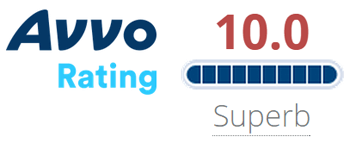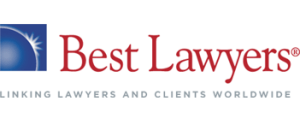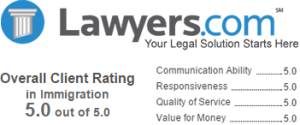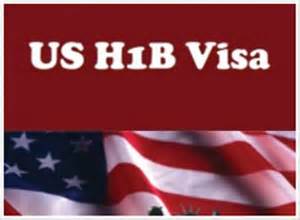
The proposed DOL H-1B regulations issued on January 5, 1999 to implement the American Competitiveness and Workforce Improvement Act of 1998 (ACWIA) pose the following 59 questions regarding the proper interpretation and implemention of ACWIA (Page numbers refer to the 87 pages of regulations that you would get if you printed out the proposed regulations from this website on 8 1/2 by 11 inch paper. ):
A. What Constitutes an “Employer” for Purposes of the ACWIA provisions? (on page 11)
B. Which Employers are “H-1B dependent” for Purposes of the ACWIA Provisions? (on page 12)
1. What is a “Full Time Equivalent Employee”? (page 12)
2. When Must An Employer Determine H-1B Dependency? (page 13)
3. What Kinds of Records Are Required Concerning the H-1B-Dependency Determination? (page 15)
4.What Information Will Be Required on the LCA Regarding an Employer’s Status as H-1B-Dependent? (page 16)
5. What Changes are Proposed for the Labor Condition Application Form and the Department’s Processing Procedures? (page 17)
C. What H-1B Worker Would be an “Exempt H-1B Nonimmigrant”? (on page 19)
1. How Would the $60,000 Annual Rate Be Determined? (page 19)
2. How Would the “Equivalent” of a Master’s or Higher Degree be Determined? (page 20)
3. How is “a Specialty Related to the Intended Employment ” Defined? (page 21)
4. Should the LCA be Modified to Identify Whether it Will be Used in Support of Exempt and/or Non-Exempt H-1B Immigrants? (page 21)
D.What Requirements Apply Regarding no “Displacement” of U.S. Workers Under the ACWIA? (on page 21)
1. What Constitutes “Employed by the Employer” for Purposes of Prohibiting a Covered Employer From Displacing U.S. Workers in its Own Workforce? (page 22)
2. What Constitutes “Indicia of an Employment Relationship” for Purposes of the Prohibition on Secondary Displacement of U.S. Workers at Worksites Where the Sponsoring Employer Places H-1B Workers? (page 23)
3. What Constitutes an “Essentially Equivalent Job” for Purposes of the Non-Displacment Provisions of ACWIA? (page 24)
4. How Deos the ACWIA Distinguish Between a Prohibited “Lay Off” and a Permissible Termination of an Employment Relationship? (page 25)
5. What Constitutes “a Similar Employment Opportunity” for a U.S. Worker Which — if Offered — Would Not Constitute a Prohibited “Lay Off” or Displacement of That Worker? (page 26)
6. What Constitutes “Equivalent or Higher Compensation and Benefit” for a U.S. Worker for Purposes of the Other Job Offer to That Worker so as to Not Constitute a Prohibited “Lay Off” or Displacement? (page 27)
7. What is Required of an H-1B-dependent (or Willful Violator) Employer Which Seeks Information About Displacement or Potential Displacement of U.S. Workers at a Second Employer’s Worksite? (page 27)
8. What Documentation Will be Required of Employers About ACWIA’s Non-Displacement Provisions? (page 28)
E. What Requirements Does the ACWIA Impose Regarding Recruitment of U.S. Workers, and Which Employers are Subject to Those Requirements? (on page 29)
1. How are “Industry-wide Standards” for Recruitment to be be Identified? (page 30)
2. What Constitute “Good Faith Steps” in Recruitment? (page 32)
3. How are “Legitimate Selection Criteria Relevant to the Job That are Normal or Customary to the Type of Job Involved” to be Identified and Documented? (page 33)
4. What Actions Would Constitute a Prohibited “Discriminatory Manner” of Recruitment? (page 33)
5. What Documnetation Would be Required of Employers? (page 34)
F. What is Required for “Electronic Posting” of Notice to Employees of the Employer’s Intention to Employ H-1 B Nonimmigrants? (on page 34)
G. What Does the ACWIA Require of Employers Regarding Benefits to H-1B Nonimmigrants? (on page 35)
1. What Does “Same Basis and * * * Same Criteria” Mean With Respect to an Employer’s Treatment of U.S. Workers and H-1B Workers With Regard to Benefits? (page 35)
2. How will Various Benefits be Evaluated, and What Documentation Would be Required? (page37)
H. What Does the ACWIA Require of Employers Regarding Payment of Wages to H-1B Nonimmigrants for “Nonproductive Time”? (on page 37)
I. What Special Rule Does the ACWIA Provide for Academic Salaries? (on page 39)
J. What Actions or Circumstances Would be Prohibited as a “Penalty” ona H-1B Nonimmigrant Leaving an Employer’s Employment? (on page 39)
K. What Standards Apply to Determine if an Employer Received a Prohibited Kickback of the Additional $500 Filin Petition fee From an H-1B Worker? (on page 40)
L. What Penalties and Remedies Apply if the Employer Imposes an Impermissible Penalty or Receives an Impermissible Rebate?(on page 41)
M. How did the ACWIA Change DOL’s Enforcement of the H-1B Provisions? (on page 41)
1. What Changes has the ACWIA Make in the DOL’s Enforcement Based on Complaints From “Aggrieved Parties”? (page 41)
2. What Procedure Does the ACWIA Provide for Random Investigations? (page 41)
3. What Procedure Does the ACWIA Provide the Investigations Arising From Sources Other Than Aggrieved Parties? (page 42)
4. What Protections are Provided to “Whistleblowers” by the ACWIA? (page 42)
5. What Changes Does the ACWIA Make in Enforcement Remedies and Penalties? (page 42)
N. What Modification to Part 656 Does the ACWIA Provide for the Determination of the Prevailing Wage for Employees of “Institutions of Higher Education”, “Related or Affiliated Nonprofit Entities”, “Nonprofit Research Organizations” or “Governmental Research Organizations”? (on page 43)
O. What H-1B Regulatory Matters, in Addition to the ACWIA Provisions, are Addressed in This Notice of Proposed Filing? (on page 45)
1. What Are the Opportunities and Guidelines for Short-term Placement of H-1B Workers at Worksite(s) Outside the Location(s) Listed on the LCA? (page 45)
a. When is the Short-term Placement Option Available? (page 47)
b. What Are the Standards for Payment of the H-1B Worker’s Travel Expenses Under the Short-Term Placement Option? (page 48)
2. What are an Employer’s Wage Obligations for an H-1B Worker’s “Nonproductive Time”? (page 49)
3. What Are the Guidelines for Determining and Documenting the Employer’s “Actual Wage”? (page 49)
4. What Records Must the Employer Keep, Concerning Employee’s Hours Worked? (page 50)
5. What are the Requirements for Posting of “Hard Copy” Notices at Worksite(s) Where H-1B Workers are Placed? (page 51)
6. What Are the Time Periods or “Windows” Within Which Employers May File LCAs? (page 51)
7. How May an Employer Challenge a SESA-Issued Prevailing Wage Determination? (page 52)
P. What Additional Interpretative Regulations is the Department Proposing? (on page 53)
1. What Constitutes an H-1B Worker’s “Worksite” or “Place of Employment” for Purposes the Employer’s Obligations Under the Program? (page 53)
2. Under What Circumstances May an H-1B Worker “Rove” or Float” from His/Her “Home Base” Worksite? (page 53)
3. What H-1B Related Fees and Costs Are Considered to Be an Employer’s Business Expenses? (page 54)
4. When Is the Service Contract Act Wage Rate Required to Be Applied as the “Prevailing Wage”? (page 54)
5. How Are the “PMSA” and “CMSA” Concepts Applied? (page 54)
The actual text of the proposed regulations is contained on pages 63-87 beginning with “Part 655 — Temporary Employment of Aliens in the United States”.
Skype Consultations Available!![]()
